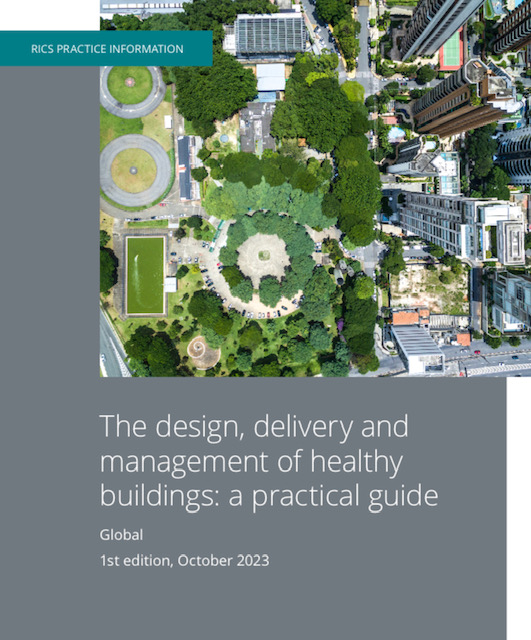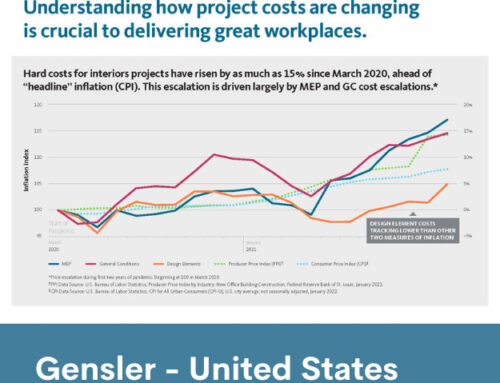The design, delivery and management of healthy buildings: a practical guide

RICS practice information, global 1st edition, October 2023
Research by the Harvard T.H. Chan School of Public Health (The impact of healthy buildings) and Brodin et al (Variation in the human immune system is largely driven by non- heritable influences) shows that our individual health is directly tied to the health of our buildings, and that our environment can have more influence on some aspects of our health than genetics. Addressing health and well-being in the built environment is therefore vital to supporting public health.
Recognising this link, design for well-being has emerged as a distinct new discipline, alongside a range of global certification standards. Separate from the field of sustainability, which seeks to understand how buildings impact the environment, the field of design and management for well-being is centred on the human experience – the profound impact that buildings have on our mental and physical health. It concerns every aspect of master planning and building design and every built environment professional.
Delivering healthy buildings and healthy places is also fundamental to achieving progress in wider global issues, such as the UN Sustainable Development Goals. It is therefore the collective role and responsibility of all built environment professionals to ensure that we are delivering buildings for current and future generations that will ultimately help to create healthy, thriving and resilient communities globally.
In previous decades, much attention has been paid to sustainable buildings, with significantly less focus on how buildings impact people and their health. Alongside the rise of major global certifications, such as Fitwel and the WELL Building Standard, this has now emerged as an important new discipline.





